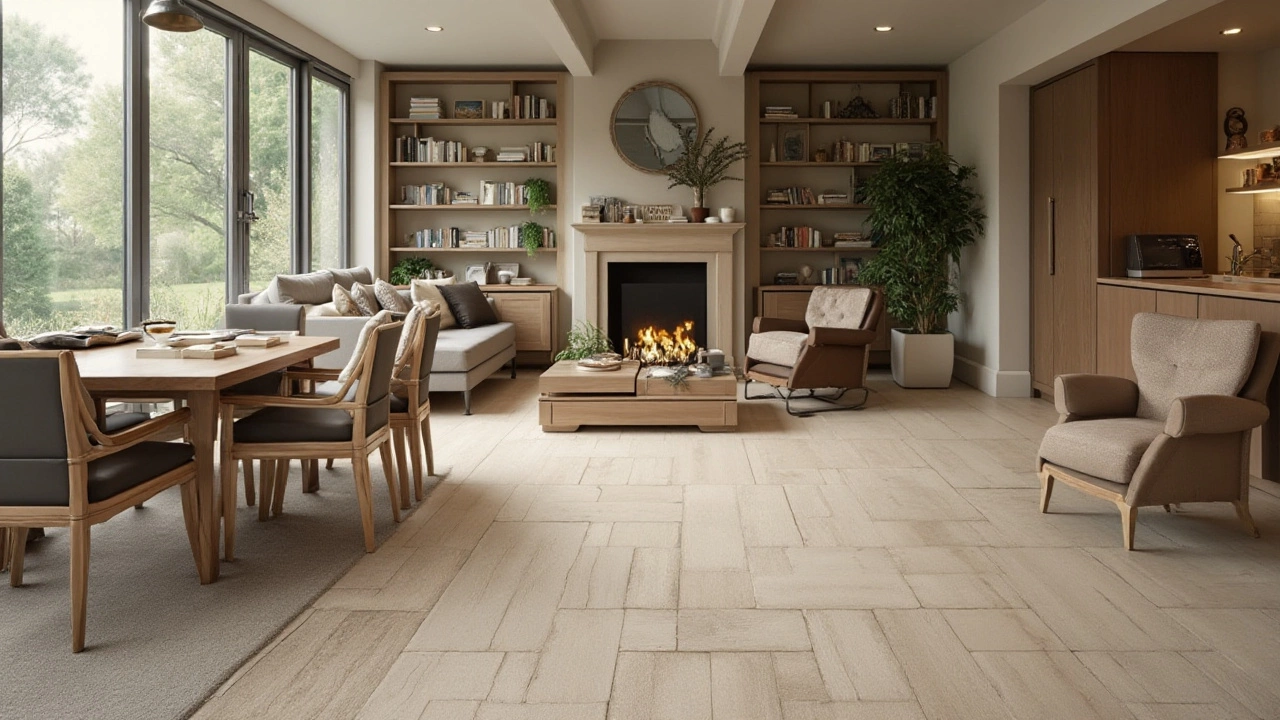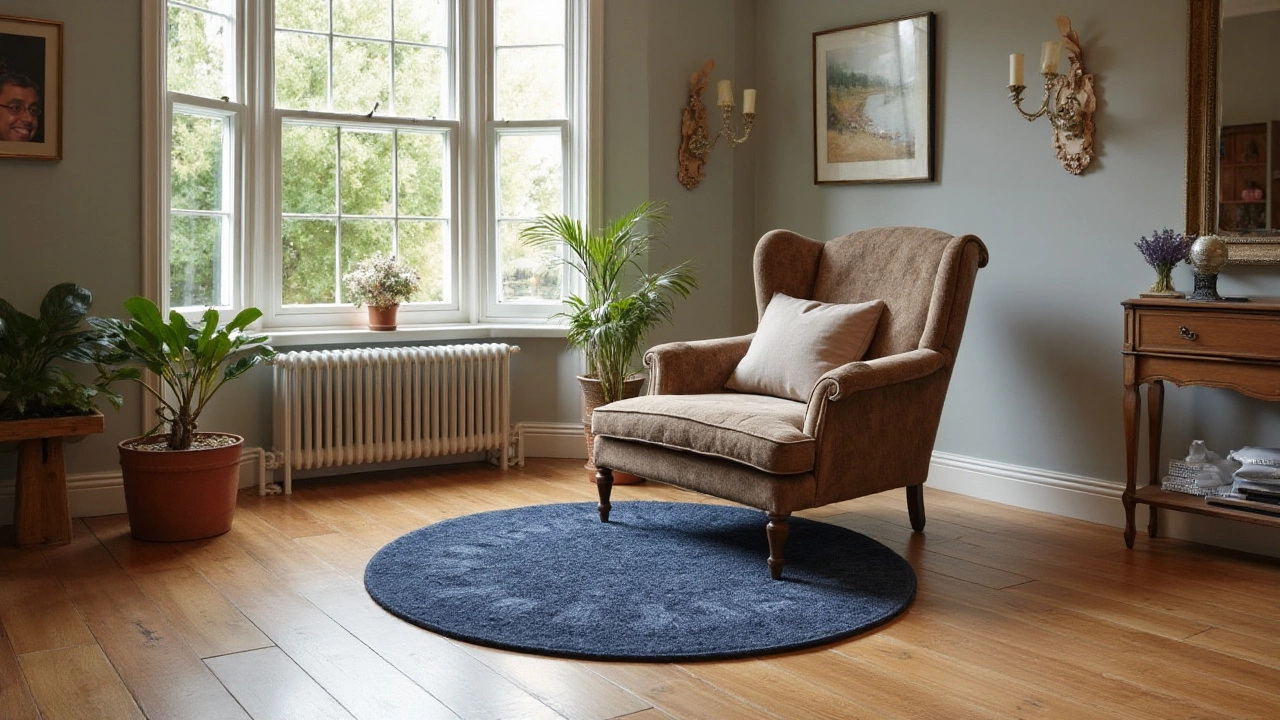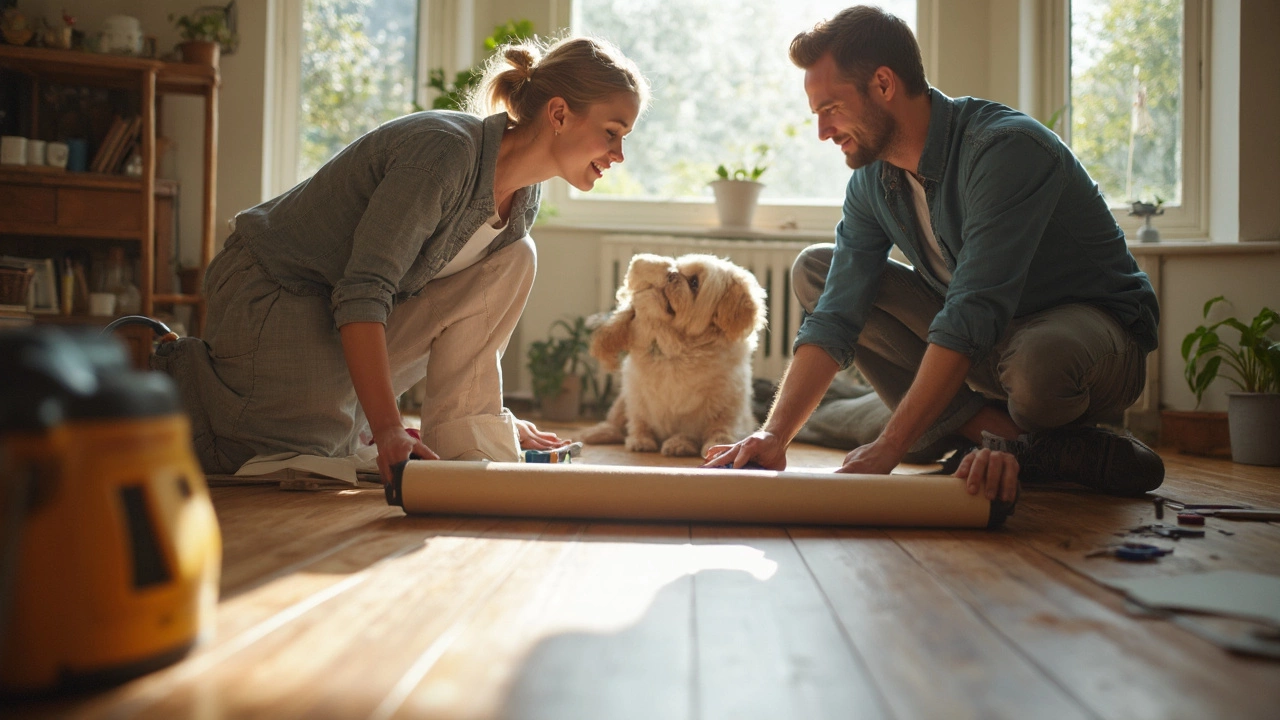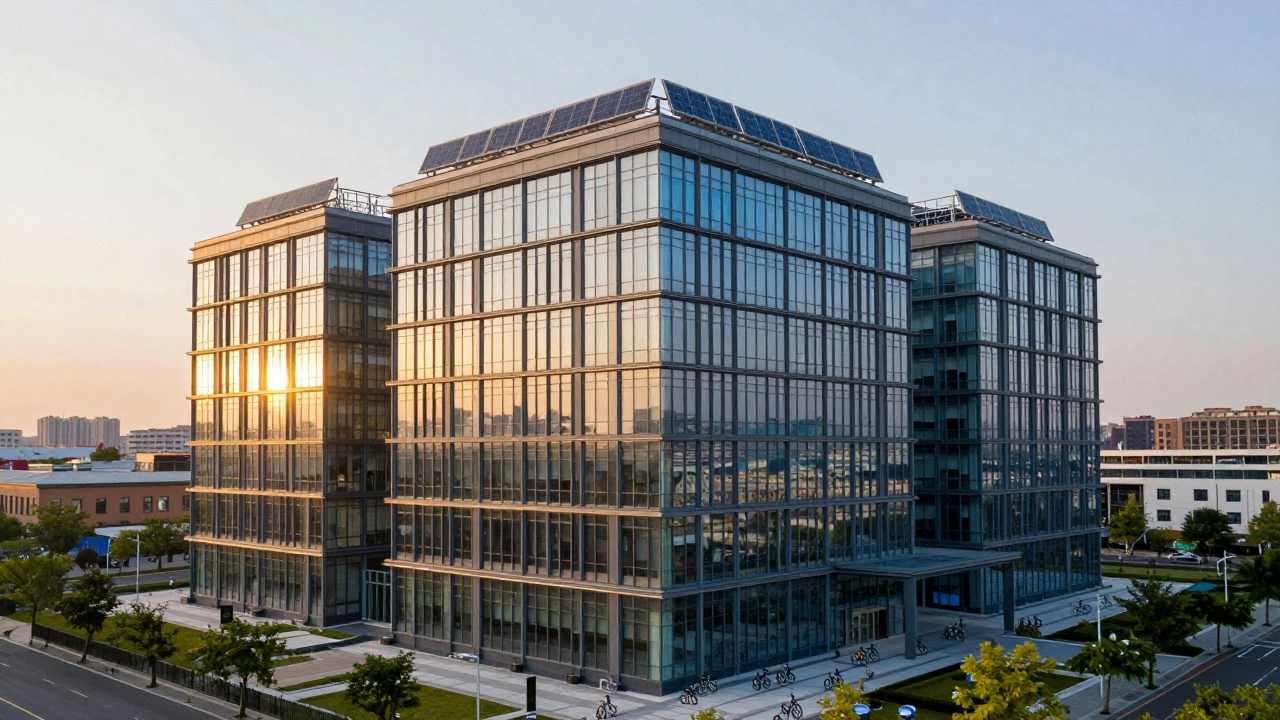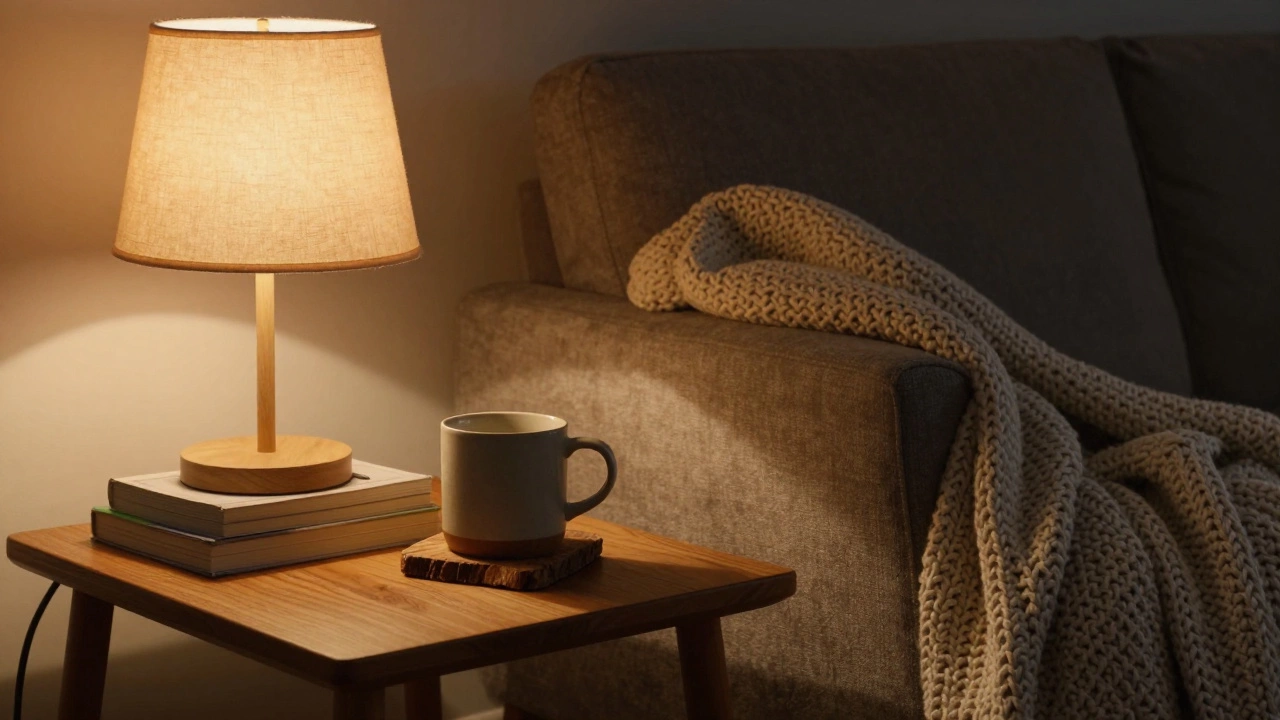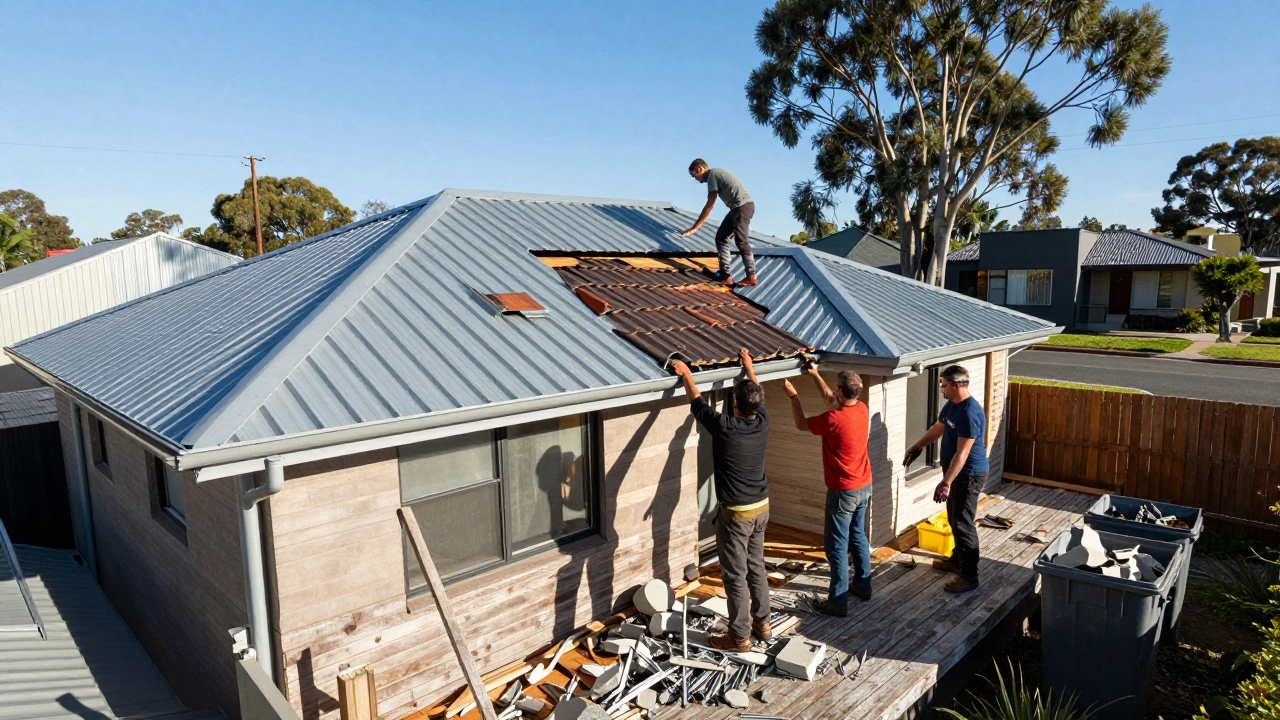In the ever-shifting world of interior design, flooring remains a pivotal element that can define the look and feel of a home. As we navigate through 2025, a new tide of popular floor coverings is redefining our living spaces, blending aesthetic allure with functionality and sustainability. But which of these coverings captures the hearts of homeowners the most?
This exploration takes you through the myriad of choices at your feet. From the classic appeal of hardwood to the innovative, eco-friendly options that are catching the public's imagination, each material offers unique advantages. Along with visual appeal, aspects like durability, maintenance, and environmental impact are increasingly shaping decisions.
Join us as we delve into the details of today's favorite flooring options, offering insights and tips to make the best selection for your home. Whether you're remodeling or building anew, understanding the latest in floor covering can elevate your space, making it both stylish and practical.
- Emerging Flooring Trends
- Comparing Popular Materials
- Sustainability in Flooring
- Tips for Choosing the Right Flooring
- Future Predictions in Floor Covering
Emerging Flooring Trends
In 2025, the world of flooring trends is not just about aesthetic appeal; it's about embracing technology, sustainability, and innovative design. A significant shift towards eco-friendly materials is apparent, with homeowners increasingly opting for materials that minimize environmental impact. Cork and bamboo have gained traction due to their renewable nature and impressive durability. Cork, beloved for its softness and thermal insulation properties, has found its way into more households as a comfortable flooring option, especially in regions with colder climates. Bamboo, touted for its rapid regrowth and strength, offers a natural elegance that rivals traditional hardwood, making it a top choice among eco-conscious renovators.
Another trend to watch is the evolution of luxury vinyl tiles (LVT). This option mimics the appearance of more expensive materials like stone and wood at a fraction of the cost. The advancement in printing technology has made LVT more realistic and desirable, capturing the interest of budget-savvy homeowners who do not want to compromise on style. Water-resistant and resilient, it suits a variety of spaces, including those prone to moisture, like bathrooms and kitchens. Alongside these, polished concrete continues to be popular in minimalist and industrial-styled homes for its sleek look and longevity.
Interestingly, a resurgence of vintage styles brings back the charm of patterns like terrazzo and herringbone. Terrazzo, celebrated for its speckled, mosaic-like appearance, offers vibrant and customizable designs that appeal to those looking to make bold visual statements. Meanwhile, herringbone patterns in wood or tile form demonstrate a classic elegance with a modern twist, infusing spaces with sophistication and depth.
Architect and critic Oliver Heath remarked, "Sustainable flooring options are not just a trend; they are a movement towards healthier living environments that prioritize sustainability and wellness."
Technology is playing a critical role in the development of new flooring options. Smart floors are emerging, incorporating sensors that track foot traffic and temperature changes, offering options that are as functional as they are stylish. Home improvement enthusiasts can now explore floors that communicate with smart home systems, leading to unparalleled convenience and control. This tech-driven approach reflects wider innovation in home design, aiming for synergy between practical needs and cutting-edge advancements.
To encapsulate the new trends, homeowners are looking for floor coverings that exhibit both resilience and charm, are kind to the planet, and smoothly integrate with digital technologies. With an eye on the demands of modern life, today's popular floor covering choices reflect a blend of time-tested elegance and forward-thinking innovations. Renovators and designers alike are encouraged to delve into the realm of emerging materials and patterns to find solutions that match their unique tastes and functional requirements.
Comparing Popular Materials
In today's flooring landscape, choices abound, each offering distinct characteristics that cater to the diverse tastes and needs of homeowners. Let's embark on a journey to explore the most popular floor coverings that are making waves in 2025, with a keen eye on their advantages and the subtle nuances they bring to home spaces.
Hardwood floors, with their timeless elegance, continue to seduce with a charm that’s hard to replicate. Known for a rich grain and the ability to age beautifully, hardwood is the go-to for those seeking a classic, lasting impact. Nevertheless, it's important to weigh its higher cost and maintenance needs. Regular polishing and general upkeep are essential. Yet, its ability to add value to any property can't be overlooked, often seen as a long-term investment, it resonates with those who favor style with substance.
Laminate Flooring: The Cost-effective Contender
In stark contrast to hardwood, laminate flooring serves the masses with its affordability and versatility, mimicking the look of genuine wood without the hefty price tag. Laminate resists scratches and dents, making it ideal for high-traffic areas or homes bursting with energy from kids and pets. A cinch to install with its click-lock design, many DIY enthusiasts favor it. A lesser-known, fascinating fact about laminate is how well it can handle moisture, often surpassing traditional wood in this regard. Despite these strengths, its inability to be refinished like true wood means it doesn't bear the same long-term resilience.
The flooring trends in eco-conscious options find their champion in bamboo flooring. Fast-growing and renewable, bamboo serves green homes with style. This flooring has gained traction for its unique textures and its sturdiness, often harder than many hardwoods. Designers celebrate its contemporary flair, seamlessly fitting both modern and eclectic interiors. Bamboo comes with a healthier environmental profile, a shining star for those wishing to reduce their carbon footprint.
Ceramic Tiles: The Durable Classic
Diving into ceramic tiles, one cannot ignore the durability and unlimited design possibilities they offer. With a staggering variety of colors, sizes, and textures, tiles are the darling of custom design lovers. Impervious to water, they are unmatched in bathrooms and kitchens. Recent advancements have propelled the creation of tiles that mimic hardwood, stone, and even fabric, expanding their appeal. Despite being cold underfoot, this can easily be conquered with underfloor heating, albeit at an extra cost. The longevity of ceramic tiles remains unrivaled, promising decades with little wear.
"Ceramic tiles are like the chameleon of floor coverings—providing enduring aesthetics and function while evolving with design trends," notes The Interior Selector Journal.
On the softer side, carpet, surprisingly, still holds a corner of the market, loved for its warmth and sound insulation. It's the top choice for bedrooms and cozy family rooms, offering a plush underfoot experience that hard surfaces can't compete with. Improved fiber technology has vastly enhanced stain resistance and longevity, though allergies can be a concern for many.
Choosing between these flooring ideas necessitates consideration of personal lifestyle, budget, and aesthetic inclination. Each material speaks a different language, offering distinct solutions to flooring puzzles. The bounding variety affirms one thing: the power lies at your feet, ready to transform space from ordinary to truly extraordinary.

Sustainability in Flooring
In recent years, the demand for eco-friendly floor coverings has surged, reflecting a broader shift towards sustainability in the home improvement industry. As we progress into 2025, sustainability is no longer just a trend but a key factor in consumer choices. More homeowners are seeking flooring solutions that not only look good but also minimize environmental impact. This increase in demand has spurred a variety of options, ranging from natural materials to innovative synthetic solutions designed to reduce ecological footprints.
Among the numerous sustainable options, bamboo flooring stands out for its rapid renewability. It is often hailed as a green choice because bamboo, technically a grass, grows extremely fast, allowing for more frequent harvests without harming the ecosystem. Similarly, cork flooring, harvested from the bark of the cork oak tree, regenerates itself every nine years without causing damage to the tree. Both options are not only sustainable but also offer durability and a unique visual texture underfoot.
Recycled materials are also gaining significant traction. Manufacturers are creatively reusing materials like rubber tires and plastic bottles, transforming them into sleek, modern flooring options. These solutions not only prevent waste from ending up in landfills but also offer robustness and easy maintenance. For example, recycled glass tiles are both beautiful and resilient, offering a chic look with a green background. Meanwhile, rubber floors, often used in gyms, are becoming popular for their resilience and ease of cleaning for home installations too.
Incorporating sustainability in flooring extends beyond the materials themselves; it touches on the production process too. Companies are now striving to reduce their carbon footprint by adopting eco-friendly manufacturing practices. This includes using water-based finishes rather than harmful chemicals and optimizing energy efficiency in production lines. Suppose a company employs solar energy to power their factories. In that case, they further contribute to reducing the carbon emissions associated with their products. Such practices are becoming standard as consumers increasingly demand transparency and responsibility from the brands they support.
According to a survey conducted by Houzz in 2024, 65% of homeowners mentioned sustainability as a key influence in their flooring purchases.
"We've reached a point where sustainability is not optional—it's crucial," says Karen Jones, an industry expert in eco-friendly design. "Homeowners want to feel good about their choices, knowing they're contributing positively to the planet."This perspective represents a seismic shift from the past, where choices might have been based purely on aesthetics or price.
Looking to the future, it's clear that the intersection of technology and sustainability will continue to evolve. We may see floors that don't just prevent harm but actively contribute to the environment, such as those embedded with photovoltaic cells to generate clean energy. As flooring technology advances and consumer awareness grows, the possibilities for eco-friendly solutions are bound to expand, making sustainable floor choices a winning proposition for environmentally conscious living.
Tips for Choosing the Right Flooring
Navigating the world of flooring trends can be overwhelming, given the variety of options available today. Choosing the right floor covering doesn't just enhance your home aesthetically; it also affects its comfort, safety, and even energy efficiency. When embarking on this choice, consider the specific needs and character of each room. Start by analyzing how much traffic the area receives. For active households, especially those with pets or kids, durability should be a priority. Consider materials that withstand wear and tear, such as tile or vinyl, for busy spaces like hallways and kitchens.
Equally significant is the aesthetic appeal. Every type of flooring brings a different vibe and texture to a room. Hardwood continues to be a beloved choice for living areas due to its timeless appeal and versatility. Carpets, on the other hand, offer a plush, warm feel, making them ideal for bedrooms. In recent years, environmentally-conscious homeowners have gravitated towards sustainable materials like bamboo and cork. These options not only reduce ecological impact but also carry unique textures and patterns, adding character to spaces.
Temperature and climate should also steer your choice. In warmer climates, materials like stone and tile can help keep homes cool, while in colder regions, carpets and heated wood floors add coziness. Maintenance is another vital aspect. Being realistic about the upkeep you're willing to manage could save you from unnecessary headaches. For instance, while plush carpets demand regular cleaning and can stain easily, alternatives like laminate might ease upkeep.
A budget plan plays a crucial role in flooring decisions. Whether you're drawn to the high-end allure of natural stone or prefer the cost-effective ease of vinyl, setting a clear budget helps streamline your choices. It's worth considering that some stylish options, although cheaper, can mimic the look of expensive materials remarkably well. Take waterproof luxury vinyl planks, for example—they provide a hardwood appearance without the hefty price tag.
Finally, consult the professionals if uncertainty persists. Reaching out to interior designers or flooring specialists can provide valuable insights and prevent you from making costly mistakes. They can guide you in harmonizing the new flooring with existing elements of your decor. As interior designer Jane Lockhart famously said,
"A little expert advice can go a long way in fine-tuning your personal style and achieving a home that's unmistakably you."
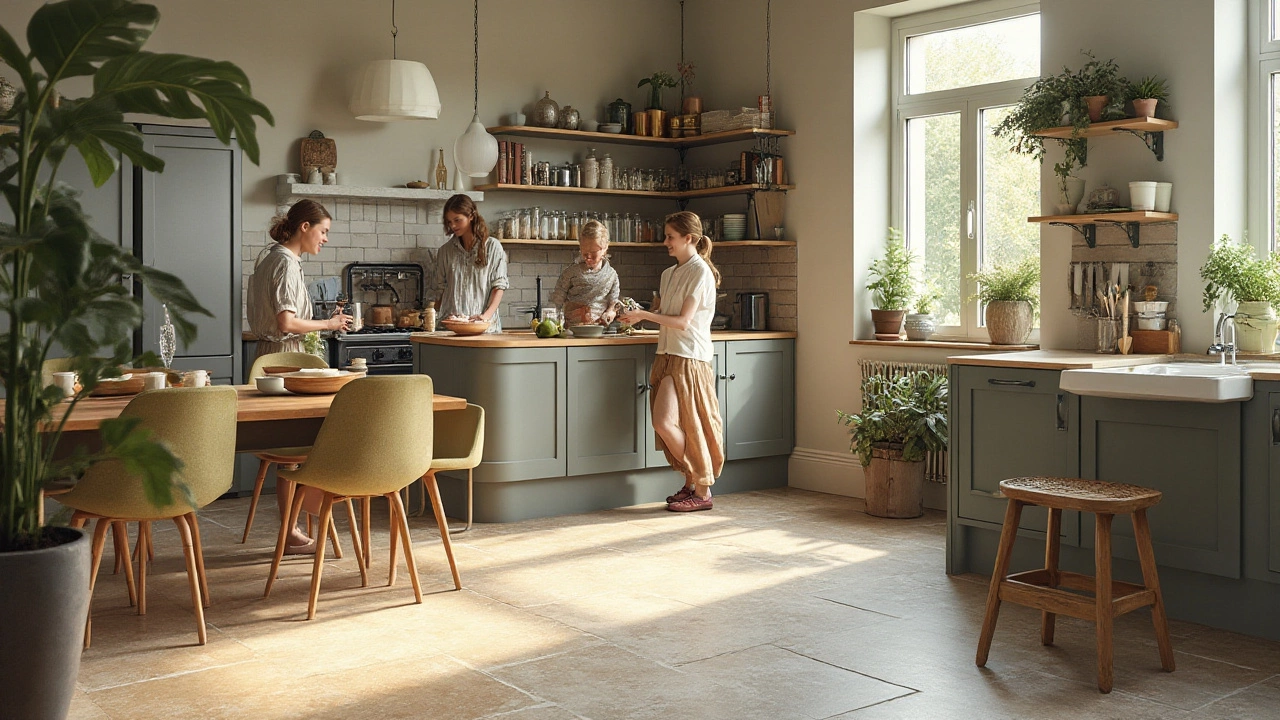
Future Predictions in Floor Covering
As we gaze into the horizon of flooring trends, it becomes increasingly clear that innovation is the driving force shaping our future choices in flooring. One major prediction is the continued rise of eco-friendly and sustainable materials. Environment-conscious consumers are fueling a shift towards products that not only look good but are also gentle on our planet. Materials like bamboo and cork are expected to gain popularity due to their renewable nature and minimal environmental footprint.
Another trend that is making waves is the integration of technology within floor coverings. Smart floors that transmit data about foot traffic and provide heating are no longer just ideas of the future but are becoming realities today. These innovations are being developed to offer homeowners an elevated experience while contributing to energy efficiency. The tech-savvy generation is likely to embrace this intersection of design and technology, making smart floors a significant trend to watch.
"In the next five years, we expect to see flooring that can change color with the touch of a button," predicts Julian Matthews, a leading interior designer. "Technology is enabling creativity beyond what we could have imagined."
The aesthetics of flooring are also predicted to lean towards customizable solutions. People want spaces that reflect their personal style, leading to an increase in customizable patterns and textures. Whether it's mixing materials or creating unique designs, consumer demand is shifting towards personalized flooring options.
| Year | Material | Trend* |
|---|---|---|
| 2022 | Vinyl | Durability |
| 2025 | Smart Floors | Technology Integration |
| 2030 | Biodegradable Materials | Sustainability |
The resilience of these trends is not only reflective of technological advancements but also of changing societal values. As more people become mindful of the environmental impact of their choices, the demand for sustainable flooring ideas will likely dominate the market. Additionally, as technology continues to seep into our daily lives, tech-driven solutions in home improvement are bound to become indispensable.

